Hangul 류관순 Name Ryu Gwansun McCune–Reischauer Ryu, Kwansun | Hanja 柳寬順 Education Ewha Womans University | |
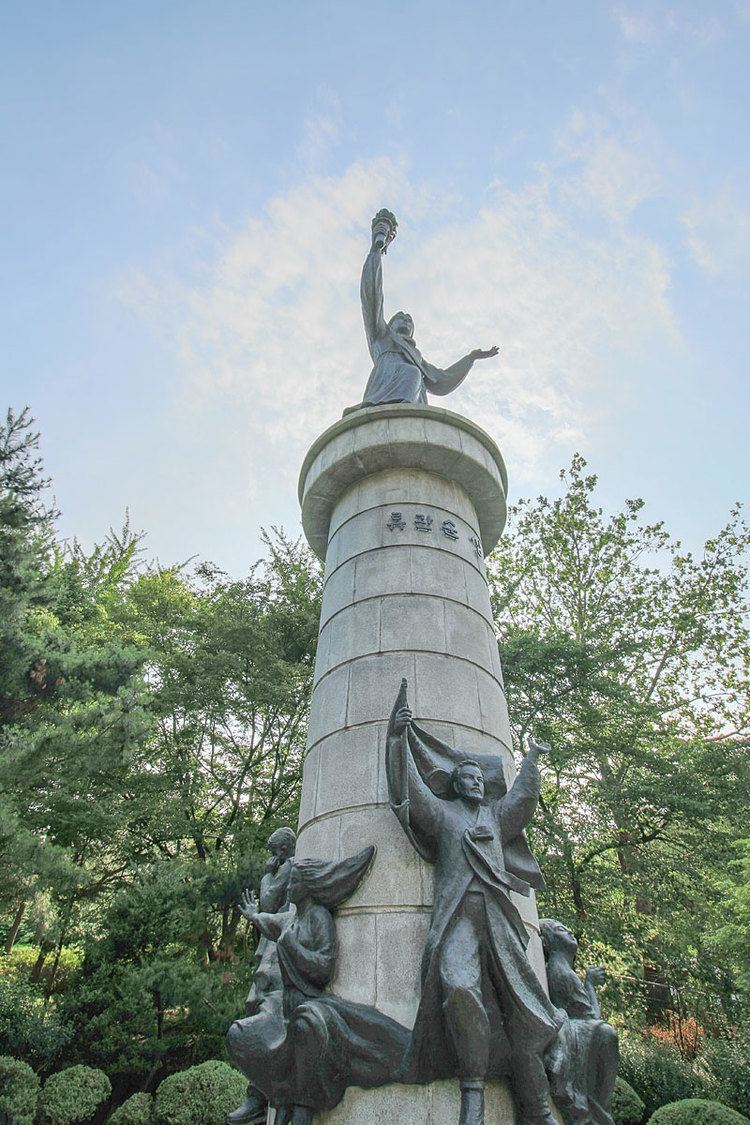 | ||
Died September 28, 1920, Seodaemun District, Seoul, South Korea Siblings Ryu Gye-chul, Ryu In-seok, Ryu Gwan-seok | ||
Revised Romanization Ryu, Gwansun | ||
2 a korean hero ryu gwansun
Ryu Gwansun (December 16, 1902 – September 28, 1920), also known as Yu Gwan-sun, was an organizer in what would come to be known as the March 1st Movement against Imperial Japanese colonial rule of Korea in South Chungcheong. The March 1st Movement was considered a peaceful demonstration by the Korean people against Japanese rule. Ryu Gwansun became one of the most well-known participants in this movement, and eventually, a symbol of Korea's fight for independence.
Contents
- 2 a korean hero ryu gwansun
- Early life and education
- Independence Demonstration
- Aunae Market Demonstration and Arrest
- Imprisonment and Utterance
- After Death
- Legacy
- References
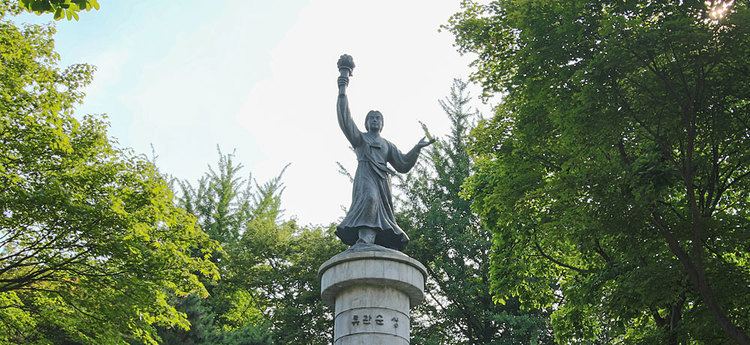
Early life and education
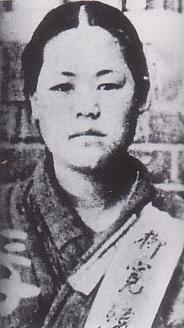
Ryu Gwansun was born in Cheonan, in the South Chungcheong Province of Korea on November 17, 1902. From early childhood, Gwansun's father encouraged her to develop a strong devotion to God and Korean national pride. She was considered an intelligent child and would memorize Bible passages upon hearing them only once. One of her teachers, named Alice Sharp, referred her to the Ewha Womans University in Seoul, known today as Ewha University. She was able to attend that school through a scholarship program that required recipients to work as a teacher after graduation. In 1919, while she was a student at the University's high school, she witnessed the beginnings of the March First Movement. Gwansun, along with a five-person group, took part in the movement and participated in demonstrations in Seoul. On March 10, 1919,all of the schools, including the Ewha Women’s School, were temporarily closed by the governor-general of Korea, and Gwansun returned home to Cheonan.
Independence Demonstration
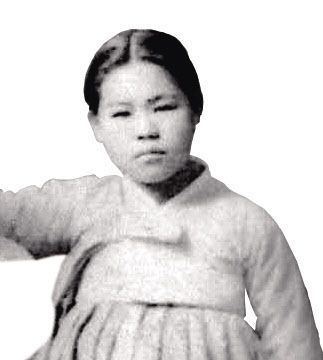
On March 1, 1919, Seoul was overflowing with marches by people from around the country protesting Japanese involvement in Korea. Gwansun left Seoul after the Japanese government ordered all Korean schools to close response to the ongoing independence protests. She returned to her home in Jiryeong-ri (now Yongdu-ri) and, while there, took a more active role in the protest movement.
Aunae Market Demonstration and Arrest
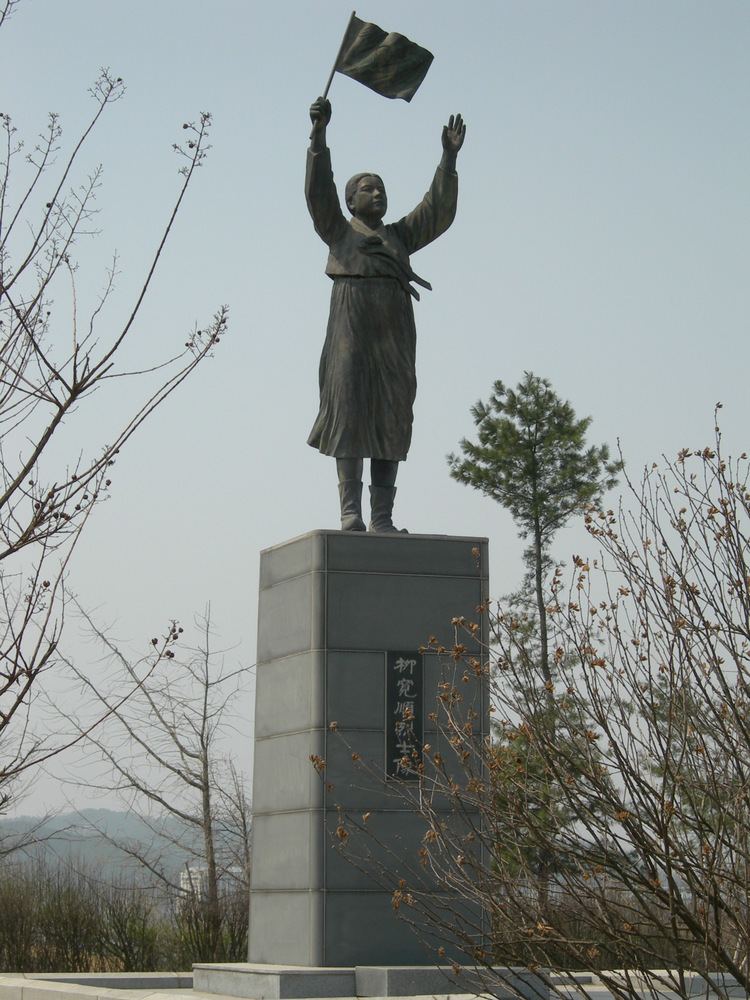
Along with her family, Gwansun began to encourage public resentment against the Japanese occupation. She visited churches to tell others of the demonstrations in Seoul, and she planned an independence demonstration with Cho In-won and Kim Goo-Eung. This included people from neighboring towns, including Yeongi, Chungju, Cheonan and Jincheon. The demonstration took place on April 1, 1919, in Aunae Marketplace at 9:00 a.m.. About 3,000 demonstrators participated, shouting, "Long Live Korean Independence!" ("대한독립만세"). By 1:00 p.m, the Japanese police responded by arresting Ryu and several other demonstrators. Chaos ensued and shots were fired killing both of Gwansun's parents and injuring Jo In-Won. As a result of the Aunae Marketplace demonstration, there were nineteen casualties and thirty others were injured by the Japanese Military.

The Japanese police offered Gwansun a lighter sentence in exchange her admission of guilt and cooperation in finding the other protest collaborators. However, she refused to reveal the identity or whereabouts of any of her collaborators even after being tortured.
Imprisonment and Utterance

After Gwansun's arrest, she was initially detained at the Cheonan Japanese Military Police Station then transferred to the Gongju Police Station prison. At her trial, Gwansun argued the proceedings were controlled by the Japanese colonial administration, the law of the governor-general of Korea, and was overseen by an assigned Japanese judge. Despite her attempts to obtain what she believed was a fair trial, Gwansun received a guilty verdict on counts of sedition and security law violations and was sentenced to five years imprisonment at Seodaemun Prison. During her imprisonment, Gwansun continued to support the Korean independence movement which caused her to be punished a number of times by Japanese prison officers.
On March 1, 1920, Gwansun prepared a massive demonstration with her fellow inmates in honor of the first anniversary of the March 1st Independence Movement. Because of her continuing protest activities, Gwansun was then taken to a different, underground prison and died three months before her release on September 28, 1920, the result of complications due to the torture and beatings she received. According to records discovered in November 2011, of the 45,000 who were arrested in relation to the protests during that period, 7,500 died at the hands of the Japanese authorities.
After Death
Japanese prison officials initially refused to release Gwansun's body in an attempt to hide the evidence of torture. Authorities eventually released her body in a Saucony Vacuum Company oil crate due to threats made by Lulu Frey and Jeannette Walter, the principals of Gwansun's former school, who voiced their suspicions of torture to the public. Walter, who dressed Gwansun for her funeral proceedings, later assured the public in 1959 that her body had not been cut into pieces as had been alleged. On October 14, 1920, Ryu Gwansun's funeral was held at the Jung-dong Church by Minister Kim Jong-wu and her body was buried in the public Itaewon cemetery, which was eventually destroyed. After Korea gained independence, a shrine was built in honor of Ryu Gwansun with the cooperation of South Chungcheong and Cheonan.
Legacy
Gwansun became known as Korea’s "Joan of Arc" and was posthumously awarded the Order of Independence Merit in 1962. While the March 1st Movement did not immediately gain freedom for Korea, the Japanese colonial government soon implemented more lenient political controls. Because she did not abandon her convictions, even after her arrest, Gwansun became a symbol of the Korean fight for independence through her unrelenting protests and resistance.
